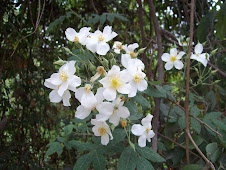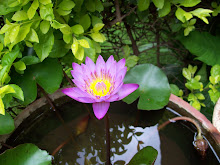 TheNorfolk Island Pine Araucaria cookii seems to be pointing to the sky vehemently in front of Crawford Hall in Mysore which houses the administration block of the Mysore University.
TheNorfolk Island Pine Araucaria cookii seems to be pointing to the sky vehemently in front of Crawford Hall in Mysore which houses the administration block of the Mysore University.Although the Araucaria is not a native of India, it grows happily to great heights in Bangalore and Mysore. It is a favourite tree of gardeners of public gardens because of its shape and dark green colour. The Araucaria gets its name from Arauco district in Chile, which is its native place. The cookii part of its name is in honour of Captain Cook, who discovered the the tree in New Caledonia during his second voyage to Australia.The tree has hard wood which is sometimes used for building .
Wish you a very happy and fulfilling New Year.
You can see more sky pictures at http://skyley.blogspot.com








